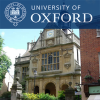The Materiality of the Divine: Aniconism, Iconoclasm, Iconography
Is the essence of the divine representable? Apparently, sharp border lines separate aniconic from iconic representations of gods; and nothing can be more opposed than iconography and iconoclasm. Yet, iconoclasm can be, and indeed was, conceived as an act of cult; its practices imply not only the power of images, but specific strategies of attention in the eye of beholders. Aniconism only makes sense within a wider context where iconic and/or narrative representations of divine entities are the norm. Religious iconographies focusing on death and rebirth allude not only to the story or myth they tell, but to the cultural practices of recollecting and indeed revitalising tradition in devotional activity such as ritual, prayer, and belief. The very status of ruins, as defined in late antiquity and the Middle Ages, can be described as a cultural formation that acts as a bridge between iconic and aniconic, meaning and destruction, iconoclasm and rebirth, “classical” and “renaissance”.




